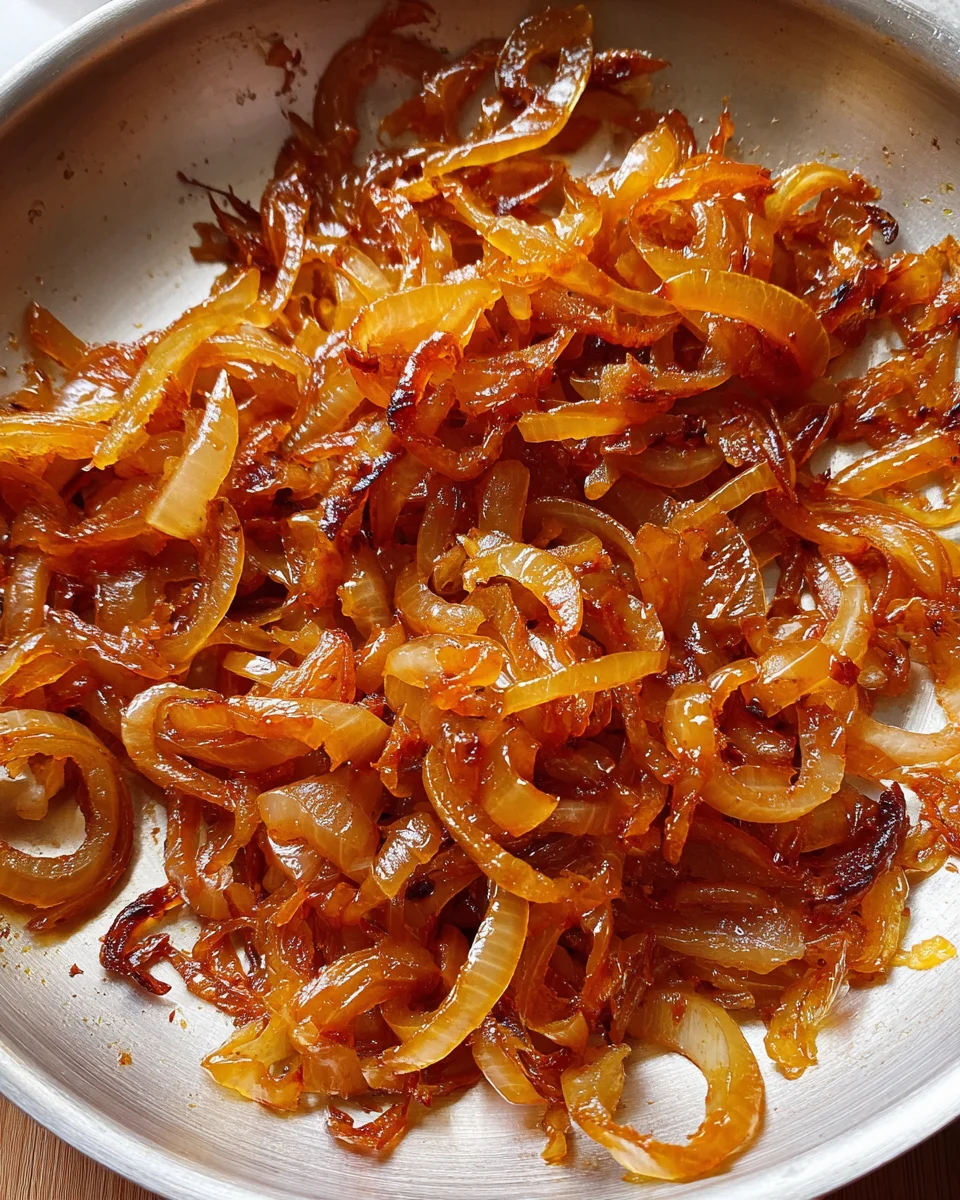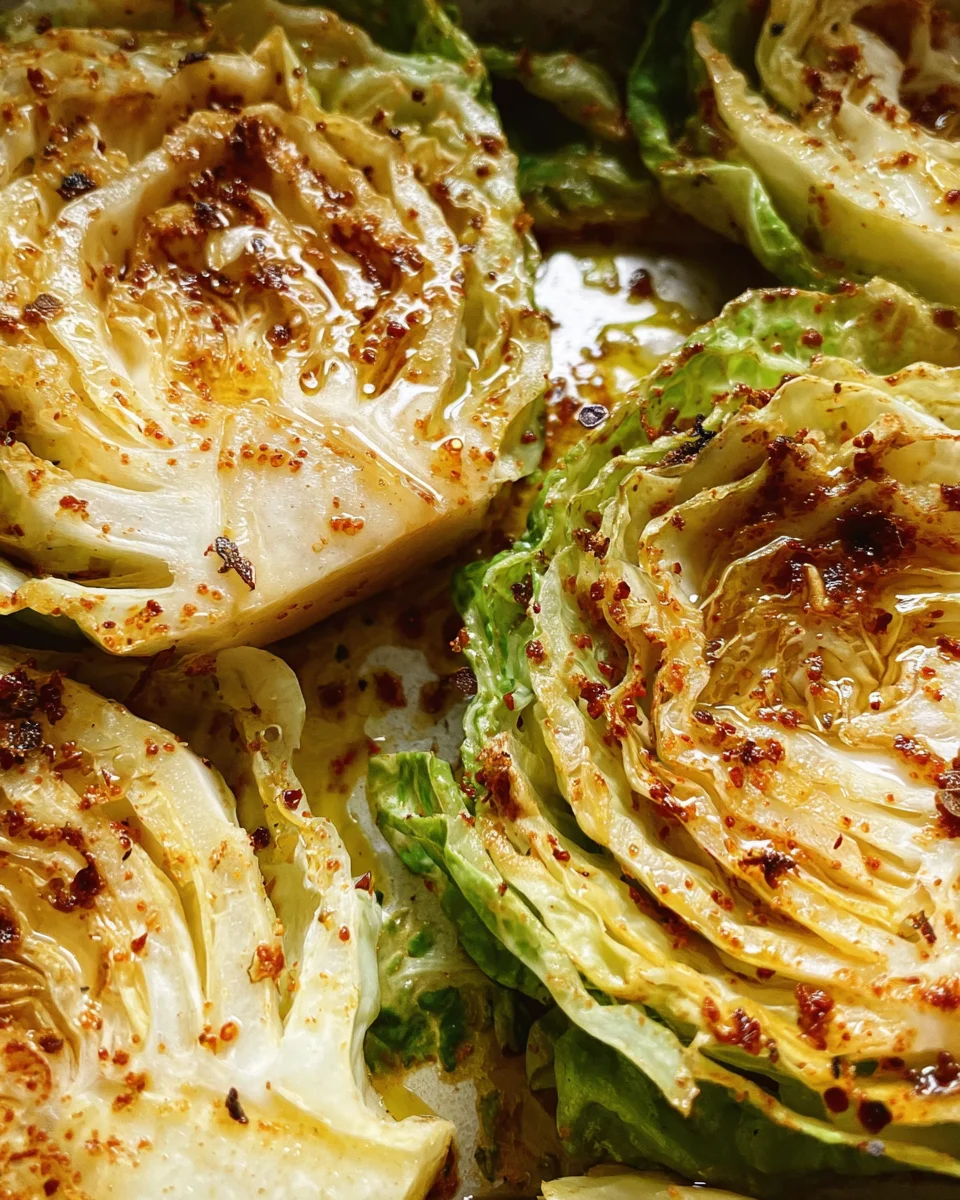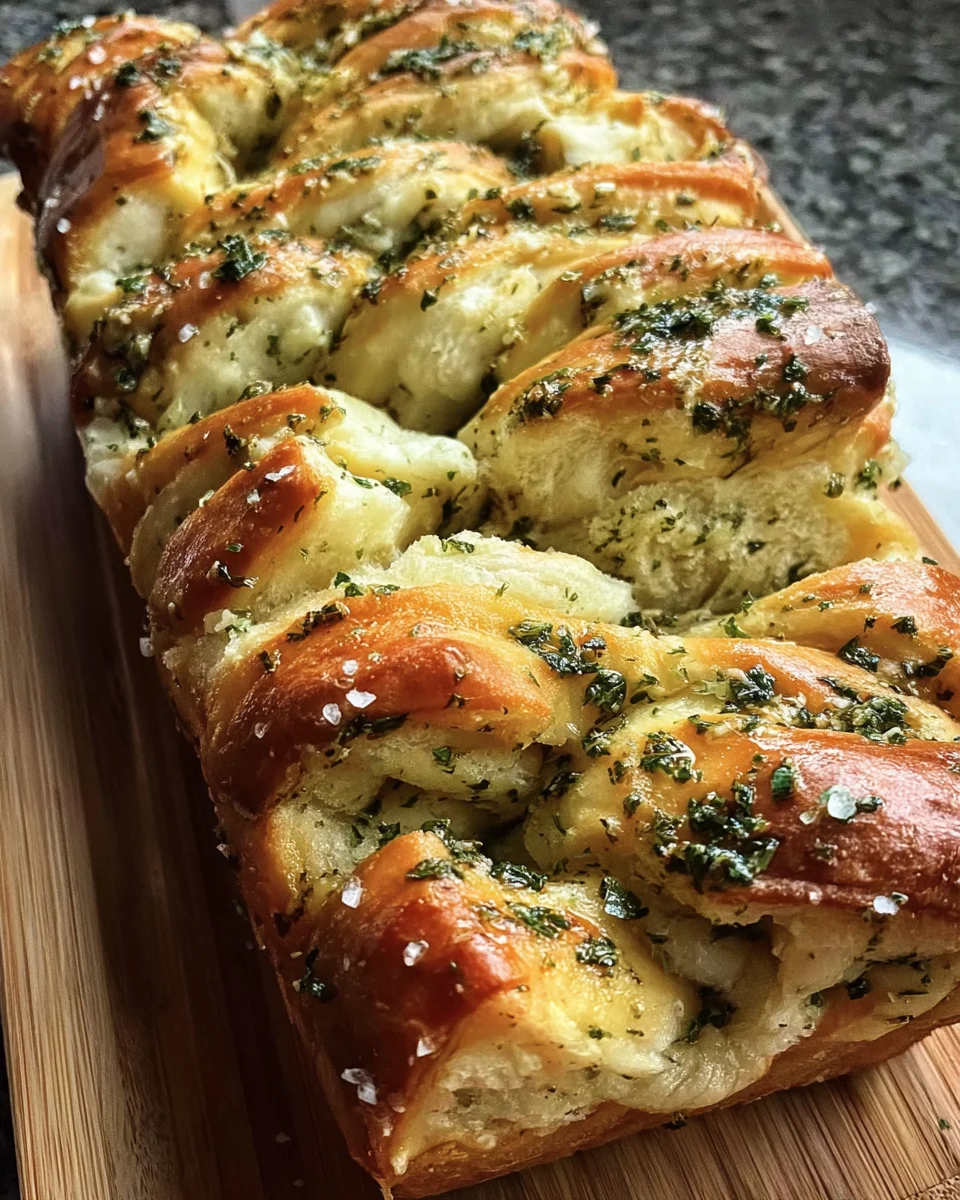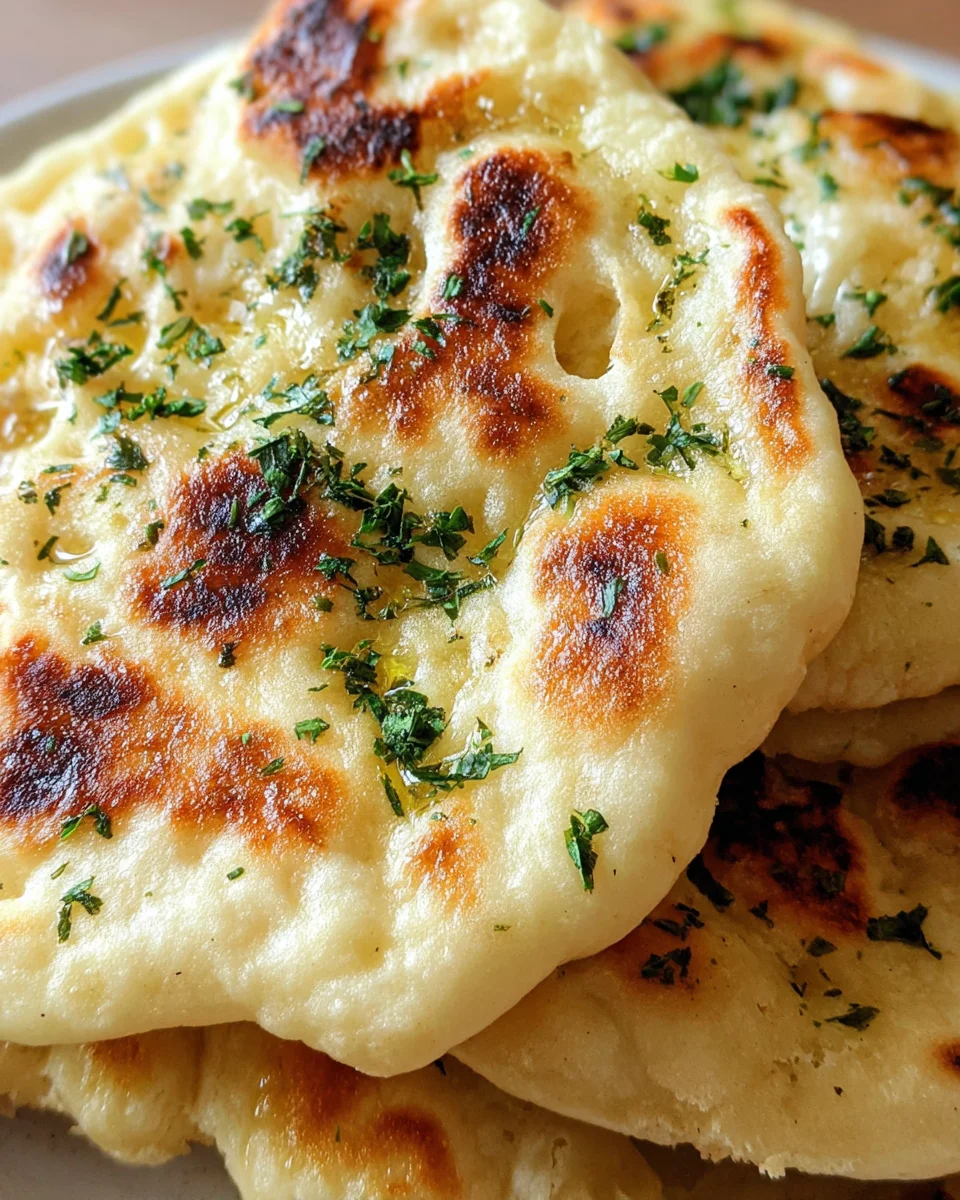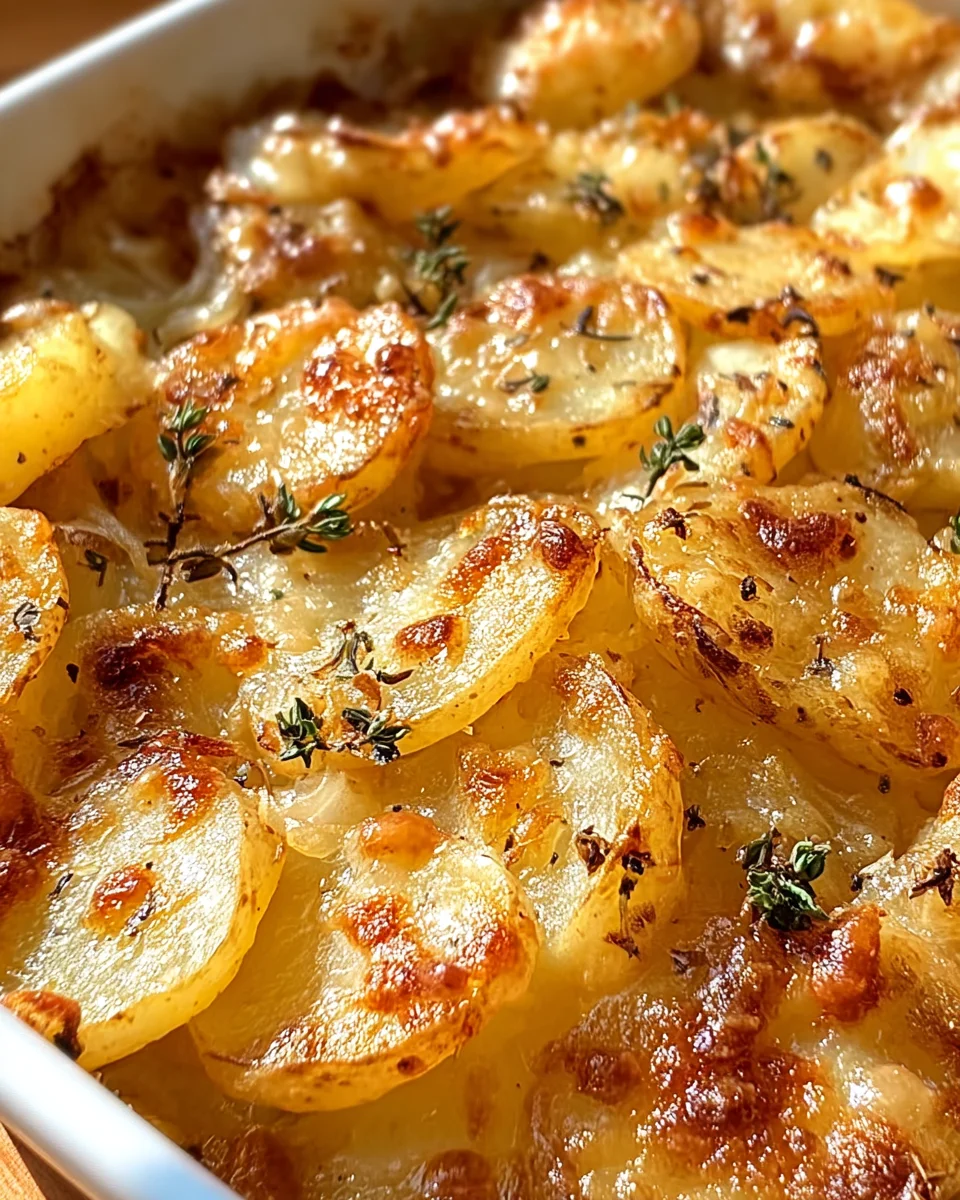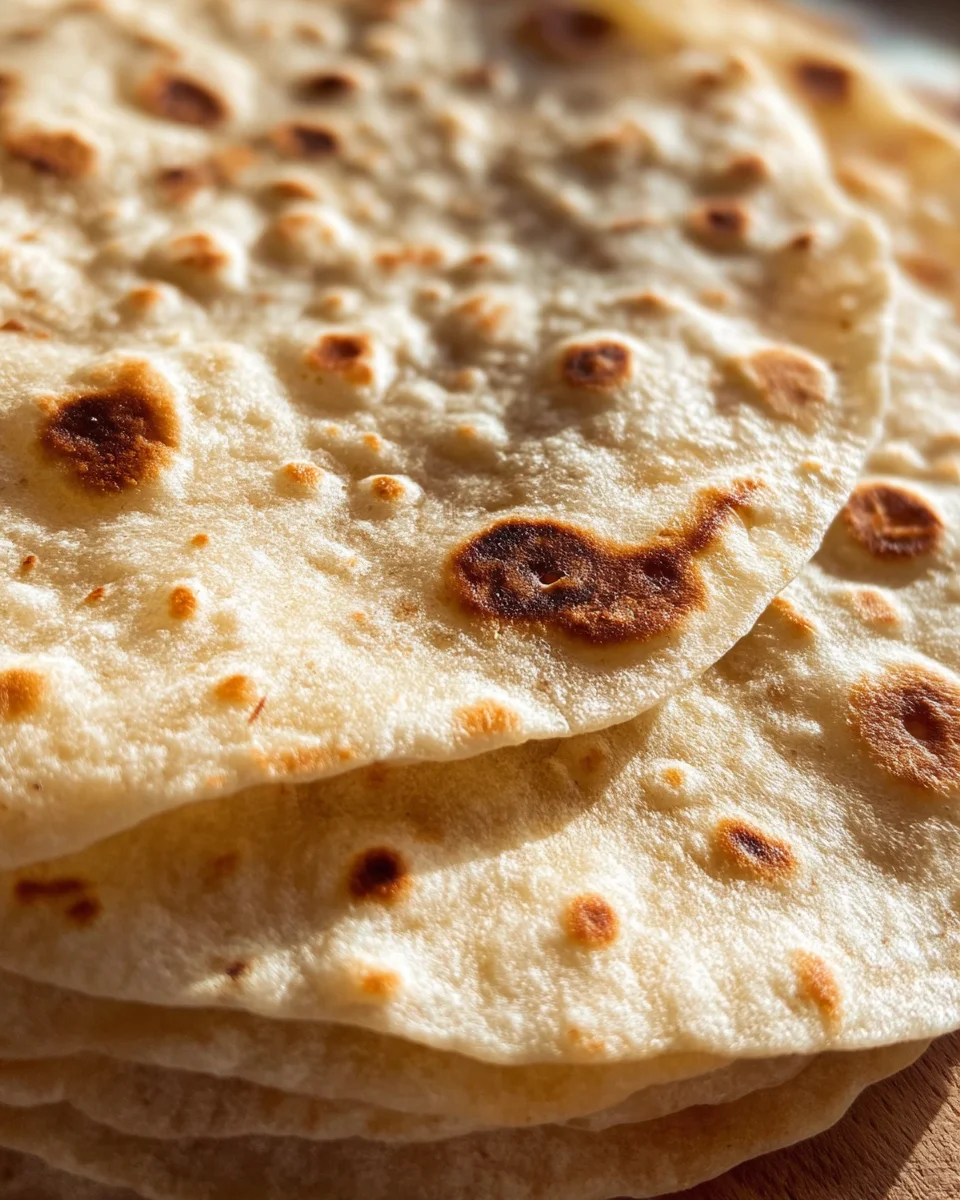Caramelized Onions
The magic of Caramelized Onions lies in their rich, sweet flavor and savory depth. These golden gems can elevate countless dishes, from topping a juicy burger to enhancing your favorite quiche. Perfect for special occasions or weekday meals, caramelized onions are versatile enough to add a gourmet touch to any plate. With this simple recipe, you’ll master the art of caramelizing onions with ease!
Why You’ll Love This Recipe
- Easy to Make: With just a few ingredients and straightforward steps, anyone can create delicious caramelized onions.
- Flavor Boost: The sweet and savory combination of caramelized onions adds a depth of flavor that enhances many dishes.
- Versatile Use: Whether in soups, sandwiches, or as a side dish, these onions fit perfectly into various recipes.
- Meal Prep Friendly: Caramelized onions store well in the fridge or freezer, making them great for meal prep.
- Vegetarian Delight: This recipe is plant-based and can be enjoyed by everyone, making it ideal for gatherings.
Tools and Preparation
Before diving into cooking, gather the essential tools to ensure a smooth process.
Essential Tools and Equipment
- Large skillet
- Spatula
- Knife
- Cutting board
Importance of Each Tool
- Large skillet: Provides enough surface area for even cooking and browning the onions.
- Spatula: Helps stir the onions thoroughly to prevent burning.
- Knife: A sharp knife ensures clean cuts for even slicing of the onions.
- Cutting board: Offers a stable surface for safely slicing your ingredients.
Ingredients
Gather these simple ingredients to make your own delicious caramelized onions:
For the Caramelized Onions
- 2 tablespoons olive oil
- 3 onions (medium or large, sliced)
- pinch of salt
- 1 tablespoon balsamic vinegar
How to Make Caramelized Onions
Step 1: Heat the Oil
Heat 2 tablespoons olive oil on high heat in a large skillet. Once heated, add sliced onions.
Step 2: Sauté on High Heat
Cook on high heat for about 10 minutes. Stir constantly using your spatula. The goal is for the onions to start browning without burning—it’s okay if a few edges get dark.
Step 3: Reduce Heat and Add Salt
Reduce heat to medium and continue cooking the onions for another 10 minutes. Keep stirring as they brown further. At this point, sprinkle just a pinch of salt over the onions.
Step 4: Final Cooking Phase
Continue cooking for another 10 minutes on medium or low heat. Stir occasionally to prevent sticking or burning. If needed, add a little water if they begin to stick too much. By now, you should have cooked the onions for a total of 30 minutes.
Step 5: Deglaze with Balsamic Vinegar
Remove from heat and sprinkle with balsamic vinegar. Use your spatula to mix the onion mixture well while scraping the bottom of the pan. Coat all the onions evenly with the balsamic vinegar.
Enjoy your beautifully caramelized onions!
How to Serve Caramelized Onions
Caramelized onions add a rich, sweet flavor to many dishes, making them a versatile ingredient in your kitchen. Here are some delicious ways to serve them that will elevate your meals.
On Burgers
- Top your burger with caramelized onions for an added depth of flavor. The sweetness complements the savory meat beautifully.
In Quiches
- Incorporate caramelized onions into quiche for a savory breakfast option. They pair well with cheese and herbs, creating a delightful dish.
With Grilled Meats
- Serve caramelized onions alongside grilled meats like steak or chicken. Their sweetness balances the smoky flavors of the grill.
In Soups
- Stir caramelized onions into soups, particularly French onion soup, for a rich base that enhances the overall taste.
As a Pizza Topping
- Use caramelized onions as a pizza topping. They pair wonderfully with cheeses and other veggies, adding a gourmet touch.
In Pasta Dishes
- Mix caramelized onions into pasta dishes for an elegant twist. They work great with creamy sauces or even simple olive oil dressings.

How to Perfect Caramelized Onions
To achieve perfectly caramelized onions, there are some key techniques to keep in mind. Follow these tips for the best results.
- Choose the right onions: Use yellow or sweet onions for optimal sweetness and flavor during the cooking process.
- Cook low and slow: Patience is crucial; cooking at low heat allows natural sugars to develop without burning.
- Stir regularly: Keep the onions moving in the pan to ensure even cooking and prevent sticking or burning.
- Use enough fat: A good amount of olive oil helps in achieving that perfect golden color while adding richness.
- Add flavor enhancers: Consider adding balsamic vinegar or herbs towards the end for extra depth and flavor.
- Don’t rush it: The best caramelization takes time; aim for at least 30 minutes of cooking for maximum sweetness.
Best Side Dishes for Caramelized Onions
Caramelized onions can enhance various side dishes, providing an enticing flavor profile. Here are some excellent options to accompany them.
- Mashed Potatoes
Creamy mashed potatoes topped with caramelized onions create a comforting side dish perfect for any meal. - Roasted Vegetables
Pair roasted root vegetables with caramelized onions for a sweet and savory combination that is both nutritious and flavorful. - Grilled Asparagus
The fresh crunch of grilled asparagus works well with the sweetness of caramelized onions, adding complexity to your plate. - Wild Rice Pilaf
Mix cooked wild rice with caramelized onions and nuts for an earthy side that brings texture and flavor together beautifully. - Brussels Sprouts
Sauté Brussels sprouts with caramelized onions for a deliciously satisfying side dish that is sure to impress. - Polenta
Creamy polenta topped with warm caramelized onions makes for an elegant accompaniment that’s both hearty and comforting. - Couscous Salad
Toss couscous with vegetables and caramelized onions for a refreshing salad full of flavor and texture. - Stuffed Peppers
Add caramelized onions into stuffed peppers to enhance their taste, making them even more irresistible!
Common Mistakes to Avoid
When making caramelized onions, it’s easy to make mistakes that can affect the flavor and texture. Here are common pitfalls and how to avoid them.
- Rushing the process: Caramelizing onions takes time. If you cook them on high heat, they may burn instead of caramelizing. Stick to medium or low heat for the best results.
- Not stirring enough: Onions need regular stirring to ensure even cooking. If you forget to stir, some onions may burn while others remain raw.
- Using the wrong type of onion: Sweet onions, like Vidalia or Walla Walla, are ideal for caramelizing. Using strong-flavored or bitter onions can ruin the dish.
- Overcrowding the pan: Cooking too many onions at once can lead to steaming rather than caramelizing. Use a large skillet and work in batches if necessary.
- Skipping salt: Adding a pinch of salt helps draw out moisture from the onions, aiding in the caramelization process. Don’t forget this step for better flavor!
- Neglecting deglazing: Failing to deglaze with balsamic vinegar or broth at the end means missing out on rich flavors stuck to the pan. Make sure to scrape those bits up!

Storage & Reheating Instructions
Refrigerator Storage
- Store caramelized onions in an airtight container.
- They will last up to 5 days in the refrigerator.
Freezing Caramelized Onions
- Place cooled caramelized onions in freezer-safe bags or containers.
- They can be frozen for up to 3 months.
Reheating Caramelized Onions
- Oven: Preheat your oven to 350°F (175°C) and warm them in a baking dish covered with foil for about 10-15 minutes.
- Microwave: Heat on medium power in short intervals (30 seconds), stirring between each interval until warmed through.
- Stovetop: Reheat in a skillet over low heat, adding a splash of water or oil if needed to prevent sticking.
Frequently Asked Questions
Here are some common questions about caramelized onions and their answers.
How do I know when my caramelized onions are done?
Caramelized onions should be golden brown and soft. Taste them; they should have a sweet, rich flavor without any bitterness.
Can I use any type of onion for caramelizing?
While any onion can technically be used, sweeter varieties like Vidalia or yellow onions yield the best results due to their natural sugars.
How can I enhance the flavor of my caramelized onions?
You can add herbs like thyme during cooking or experiment with different vinegars besides balsamic for added depth.
What dishes pair well with caramelized onions?
Caramelized onions are versatile! They complement burgers, pizzas, quiches, soups, and even salads beautifully.
Final Thoughts
Caramelized onions are not only delicious but also incredibly versatile. You can use them in various dishes, from savory tarts to comforting soups. Feel free to customize your recipe with herbs or spices that suit your taste!
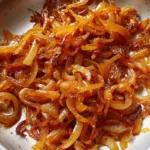
Caramelized Onions
- Total Time: 40 minutes
- Yield: Approximately 2 servings 1x
Description
Caramelized onions are a culinary delight that transforms any dish with their rich, sweet flavor and savory depth. These golden gems are incredibly versatile, perfect for topping burgers, enhancing quiches, or adding to soups and pasta. With just a few basic ingredients and simple steps, you’ll be able to master the art of caramelizing onions effortlessly. This recipe not only elevates your meals but also serves as an excellent addition for meal prep—storing well in the fridge or freezer. Whether you’re hosting a dinner party or simply cooking for yourself, caramelized onions are sure to impress with their gourmet touch.
Ingredients
- 2 tablespoons olive oil
- 3 medium or large onions, sliced
- Pinch of salt
- 1 tablespoon balsamic vinegar
Instructions
- Heat olive oil in a large skillet over high heat.
- Add sliced onions and sauté on high for about 10 minutes, stirring constantly until they begin to brown.
- Reduce the heat to medium, add a pinch of salt, and continue cooking for another 10 minutes while stirring.
- Lower the heat further and cook for an additional 10 minutes until golden brown, adding water if necessary to prevent sticking.
- Remove from heat and deglaze with balsamic vinegar, stirring well.
- Prep Time: 10 minutes
- Cook Time: 30 minutes
- Category: Side Dish
- Method: Sautéing
- Cuisine: American
Nutrition
- Serving Size: 1/4 cup (60g)
- Calories: 70
- Sugar: 4g
- Sodium: 140mg
- Fat: 5g
- Saturated Fat: 0.7g
- Unsaturated Fat: 4g
- Trans Fat: 0g
- Carbohydrates: 7g
- Fiber: 1g
- Protein: 1g
- Cholesterol: 0mg

